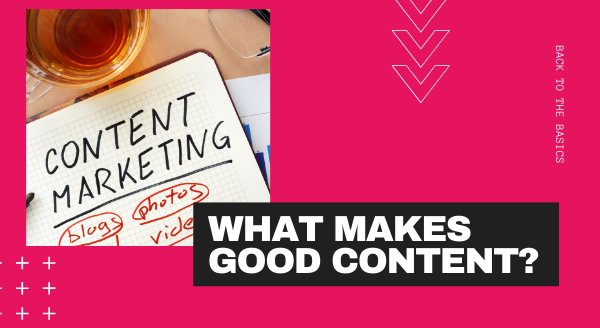
As we’ve discussed new and improved content trends for the new year, it's a good opportunity to now take a step back to the basics and review what exactly makes up good, quality content.
You know your target audience best. Providing content that is relevant and valuable to that audience will ensure that your visitors are interested and will gain something from reading. While it’s easy to just start writing, a better first step is to map out your content and ask yourself: who am I writing this for and what do I hope to accomplish.
As digital personalization tools are steadily available, this makes providing valuable content easier as you now have the ability to deliver content based on real needs and interests. As it’s always a goal to provide the best possible digital experience, use these tools to collect individual data points that matter most and use them to your advantage. Serving up content that is targeted based on collected data will not only result in higher results but will showcase that you are truly interested in providing content that is beneficial to your audience.
Training Tip: When thinking about the “why?”, ask yourself if it’s for lead generation, thought leadership, SEO, or another purpose. From there, dive into distribution channels, cadence, and success metrics.
In our digital world, users can go just about anywhere to get their information, so why should they come to you? Original content with a fresh perspective relevant to their interests will build up thought-leadership, and you will eventually start to see a following trend for those that find it useful. Don’t just take our word for it, according to Demand Metric, 82% of customers have a more positive outlook on a company after reading custom content.
Simply rehashing what you’ve already said a handful of times or what’s all over the mainstream market, your visitors won’t feel the need to continue coming back. Providing fresh, unique content gives your audience a reason to engage with your content as well as a higher chance for others to link back to your content. Showcase why you’re the expert!
Training Tip: If you’re looking for inspiration when deciding what to write about, utilize data insights you have easily available including search volume, customer pain points, commonly-asked questions, feedback from sales, and more!
Take it a step further and inspire your visitors to use this content as a reason to take action. Before deciding what to write, think how your readers will apply this information. Knowing that on average 43% of readers admittedly “skim” blog posts, try stating right off the bat what the reader will gain from this. Not only will it continue to prove value to the reader but will also drive further engagement. Knowing what they will gain, encourage the reader to get further invested by using a mixture of copy, images and video to help deliver your information.
With all this in mind, increase conversions through clear, compelling calls to action. CTA’s should be designed to be short, straight forward and created with a sense of urgency. The goal is to have a reader convert during that first visit. The chances of converting during a second visit are unlikely. Utilizing language that is persuasive, benefit heavy along with a compelling button will likely intrigue your reader to learn more and convert based on your content.
Training Tip: Never stop testing! Using A/B testing methods, continually compare two variations of your CTA’s to determine which text, design, size, etc. resonates best with your audience.
According to moz.com, search engine optimization (SEO) is defined as “the practice of increasing both the quality and quantity of website traffic, as well as exposure to your brand, through non-paid (also known as "organic") search engine results.”
While SEO should start at the content strategy level (vs. waiting until content is already written), utilize that research to highlight relevant keywords based on intended audience as well as sourced links, alt text, and more. A great exercise is periodically performing keyword research to ensure you’re always up-to-date. Don’t saturate your content with the same keywords, rather use keyword synonyms/variations along with other SEO tactics such as load speed, user intent, and others to maximize google index capability.
Training Tip: Don’t forget your metadata! Utilizing your meta description to write a powerful, relevant snippet that includes your main keyword can be a difference maker in google search rankings.
Sometimes it’s important to take a step back and make sure we haven’t gotten into a routine that forgets some of the basics. Using Cascade CMS and Clive, along with tools like Google Analytics, can help you easily create, collect, and evaluate content - and provide valuable insights that will guide your content marketing strategy and overall content journey. To learn more about how Cascade CMS and Clive can support in maintaining good, quality content, please reach out below.
Last Updated: Feb 27, 2020 11:00 AM